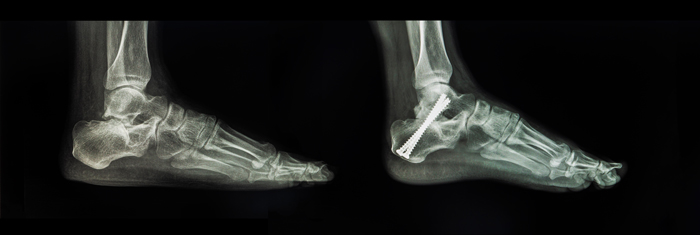Fusion of Joints Treatment & Diagnostics in Karol Bagh, Delhi
Fusion of Joints
Joint fusion surgery is a procedure that attaches or fuses two bones that are responsible for causing pain in the joint and is carried out by the best orthopedic hospital in Delhi. It pertains to fusing the bones to generate one solid bone. The fused bone is always more stable and can alleviate pain.
Who qualifies for the procedure?
If you are having serious arthritis pain, you may consult an orthopedic surgeon near you. Over time, arthritis could be the reason that causes extreme damage to your joints. If other options haven’t worked, joint fusion surgery may be the next step for you.

Why is the procedure conducted?
This procedure is conducted to reduce pain in a joint that cannot be managed by pain medication, splints or other normally indicated medications.
To seek treatment, request an appointment at Apollo Hospitals, Karol Bagh, New Delhi;
Call 1860 500 2244 to book an appointment.
What are the different types of fusion of joints?
The different types of procedures are:
- Subtalar fusion: This kind of surgery helps fuse the heel bone and the talus, the bone that attaches the foot to the ankle. The best orthopedic specialists in Delhi can help you with subtalar fusion.
- Triple arthrodesis ankle: It is a procedure during which fusion of the talocalcaneal, talonavicular and calcaneocuboid joints existing in the foot is accomplished.
- Sacroiliac joint fusion: This procedure helps in strengthening bone development over the sacroiliac joint to create one motionless unit.
- Wrist fusion: It is a process during which the wrist joint is fixed or disabled by fusing the forearm bone named radius with the minor bones of the wrist.
- Talonavicular fusion: The best ankle arthroscopy doctor in Delhi conducts this procedure to fuse a joint in the mid-portion of the foot. The two bones that get fused are the talus and the navicular bone.
Over time, the ends of your joint will gather together to become one solid part. You won’t be able to change positions anymore. Until that occurs, you’ll have to protect that particular area. Perhaps you will need to wear a cast or brace that will protect the area. And, you’ll need to keep weight off the joint. That means you’ll use crutches, walkers or wheelchairs to move around.
After you have joint fusion surgery, it is common to feel pain. Your physician will help you to control this. Non-steroidal anti-inflammatory drugs (NSAIDs) can be prescribed.
What are the risks?
- Infection
- Broken hardware
- Nerve damage
- Painful scar tissue
- Bleeding
- Arthritis in nearby joints
- Blood clots
Those people who smoke are also at risk of a condition which is called pseudoarthrosis. This implies that fusion may not be complete. In this case, you may end up requiring a second surgery.
After 12 weeks, your joints will have fused fully and you should be able to return to, say, driving a car.
You may feel some pain and discomfort depending on the location and duration of your surgery, but the pain can be controlled with treatments.
For patients who have undergone minor spine surgery or lumbar disc herniation, pain after 4 years was rated 1 or 2 out of 10.


.svg)
.svg)
.svg)
.svg)









